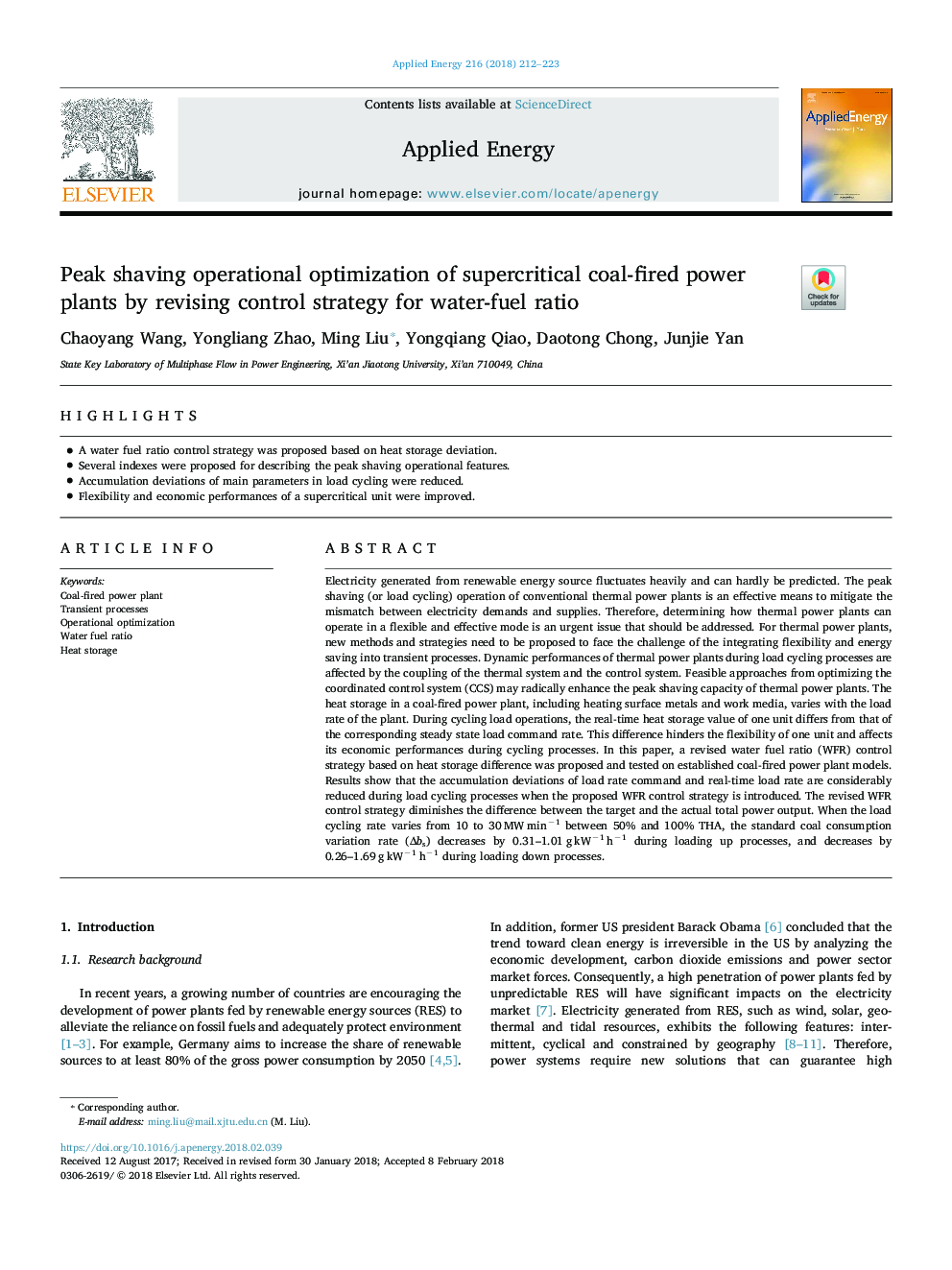| کد مقاله | کد نشریه | سال انتشار | مقاله انگلیسی | نسخه تمام متن |
|---|---|---|---|---|
| 6680536 | 1428074 | 2018 | 12 صفحه PDF | دانلود رایگان |
عنوان انگلیسی مقاله ISI
Peak shaving operational optimization of supercritical coal-fired power plants by revising control strategy for water-fuel ratio
ترجمه فارسی عنوان
بهینه سازی عملیات پاشیدن عملیات نیروگاه های سوخت زغال سنگ فوق بحرانی با تغییر استراتژی کنترل نسبت آب به سوخت
دانلود مقاله + سفارش ترجمه
دانلود مقاله ISI انگلیسی
رایگان برای ایرانیان
کلمات کلیدی
نیروگاه زغال سنگ، فرایندهای گذرا، بهینه سازی عملیاتی، نسبت سوخت به آب، ذخیره سازی گرم،
موضوعات مرتبط
مهندسی و علوم پایه
مهندسی انرژی
مهندسی انرژی و فناوری های برق
چکیده انگلیسی
Electricity generated from renewable energy source fluctuates heavily and can hardly be predicted. The peak shaving (or load cycling) operation of conventional thermal power plants is an effective means to mitigate the mismatch between electricity demands and supplies. Therefore, determining how thermal power plants can operate in a flexible and effective mode is an urgent issue that should be addressed. For thermal power plants, new methods and strategies need to be proposed to face the challenge of the integrating flexibility and energy saving into transient processes. Dynamic performances of thermal power plants during load cycling processes are affected by the coupling of the thermal system and the control system. Feasible approaches from optimizing the coordinated control system (CCS) may radically enhance the peak shaving capacity of thermal power plants. The heat storage in a coal-fired power plant, including heating surface metals and work media, varies with the load rate of the plant. During cycling load operations, the real-time heat storage value of one unit differs from that of the corresponding steady state load command rate. This difference hinders the flexibility of one unit and affects its economic performances during cycling processes. In this paper, a revised water fuel ratio (WFR) control strategy based on heat storage difference was proposed and tested on established coal-fired power plant models. Results show that the accumulation deviations of load rate command and real-time load rate are considerably reduced during load cycling processes when the proposed WFR control strategy is introduced. The revised WFR control strategy diminishes the difference between the target and the actual total power output. When the load cycling rate varies from 10 to 30â¯MWâ¯minâ1 between 50% and 100% THA, the standard coal consumption variation rate (Îbs) decreases by 0.31-1.01â¯gâ¯kWâ1â¯hâ1 during loading up processes, and decreases by 0.26-1.69â¯gâ¯kWâ1â¯hâ1 during loading down processes.
ناشر
Database: Elsevier - ScienceDirect (ساینس دایرکت)
Journal: Applied Energy - Volume 216, 15 April 2018, Pages 212-223
Journal: Applied Energy - Volume 216, 15 April 2018, Pages 212-223
نویسندگان
Chaoyang Wang, Yongliang Zhao, Ming Liu, Yongqiang Qiao, Daotong Chong, Junjie Yan,
